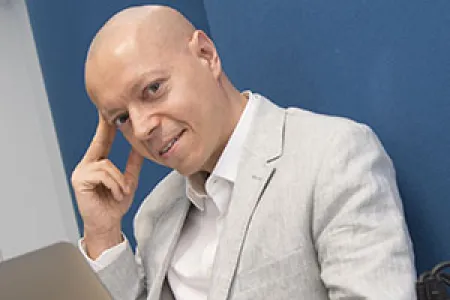Thinkers draw on hotbed of ideas to explain love of art
Charles Darwin University will discuss a new and hotly contested field of research that explores how the human brain reacts to art and beauty, at an international symposium in Darwin this week.
Lecturer in Philosophy Dr Nicolas Bullot and visiting American Professor of Neurology Anjan Chatterjee will unpack some of the latest findings in brain theory, psychology and historical scholarship and what they have to say about art.
“We will co-present the session ‘Foundations of the Science of Art’ in which we will explain how some of these ground-breaking scientific theories challenge our ordinary understanding of art,” Dr Bullot said.
“Professor Chatterjee is a leader in neuroaesthetics, an emerging discipline that applies discoveries about the human brain to better understand why we love beauty and art.”
Dr Bullot said the new discipline had its critics.
“Some are sceptical that art can serve as a window into the workings of the human brain, but in this session we will present a new understanding of art, health and the human mind.”
Dr Bullot, also a sound artist, said a second session “Science, Music and Society” would demonstrate the remarkable healing powers of music and its application to health care.
This session will be presented by Dr William Forde Thompson, an internationally renowned professor of Psychology at Macquarie University.
“Professor Thompson specialises in the cognitive science of music and its application to health care and he will show the profound effects that the arts can have on our brains and minds.”
Dr Bullot said that in broad terms the symposium would seek ways for artists and humanities scholars to collaborate with scientists.
“What contributions has science made to our understanding of art, music and culture? How can we bridge the divide between science and the humanities in a way that satisfies grievances and advance understanding?
“If we take our opportunities to think about things in new and different ways we may inspire an artist to develop more creative work, or expand the potential for new scientific theory,” he said.
